
On Saturday morning we met Jana and the group and took the tram to the other side of the river to meet our local guide Andrea for a tour of the Prague Castle complex. Unfortunately it was another abnormally hot day. Although the forecast called for rain and storms, the sun was out in full force and it was another scorcher. We made our way up the hill toward the castle, stopping to admire and take photos with the guards posted outside in their powder blue uniforms. These are real soldiers who are chosen based on appearance and paid to pose with tourists. What a job.
We met Andrea and she walked us around the outside of the magnificent St. Vitus Cathedral. Construction started on the church in the 1300s. A lot of history got in the way and it was not completely finished until 1929, with the entrance façade and towers the last to be completed. Unfortunately we were not able to go inside. When Jana went to buy our tickets, she was told it was closed for a church function. Apparently this is very rare occurrence, and we just had bad luck.
When Greg woke up, he was feeling well enough to go out and grab a bite to eat. The storms had driven away the heat and it was a cloudy, much cooler evening. After eating, we headed to the Charles Bridge, as we had not yet walked across this famous landmark. The bridge dates from the 14th century and is lined on both sides with the statues of 30 saints. Massive towers stand at each end. We took our time, studying the statues, taking in the gorgeous views of the river and St. Vitus Cathedral, and indulging in a little people watching as well. Once across the other bridge, we found the Lennon Wall, one of the “must see” sights on our list. At the time John Lennon was shot, the Czechs were under Soviet communist rule, and they saw Lennon as a representative of peace and freedom. After his death, this wall was covered with graffiti memorializing Lennon and his ideals. The police would paint over it every night, but it kept reappearing--in my mind a wonderful reflection of Czech spirit and resiliency. The wall was a symbol of hope during a dark chapter of Czech history. We read the messages as a young musician serenaded us. We saw “Stand with Orlando” painted in bright yellow, in reference to the horrific mass shooting that had occurred at an Orlando nightclub on June 12. This again reminded us that we are not just citizens of the US, but members of a larger world community. I found these messages of solidarity very touching, both here and in Berlin. We slowly made our way back across the bridge and to our hotel, enjoying an ice cream and the less crowded streets along the way. Fitbit: 8,382 steps, 3.37 miles, 7 floors, but I did not wear it all day.
Tour Day 7: Saturday, June 25
Castles and Cathedrals
Charles Bridge and a Little Peek of the Little Quarter
Leaders have ruled from Prague Castle for over 1000 years. Given the relative youth of our nation, this kind of history is truly impressive. A statue of Tomas Masaryk stands in Castle Square. Masaryk was the first President of Czechoslovakia following WWI. He is the only 20th century leader to live at Prague Castle. The current Czech president has his office at Prague Castle, but chooses not to live there. Andrea explained that this is because the castle is seen as belonging to the Czech people. A flag indicates whether or not the President is in his office—when it is out, he is in.
We toured the Old Royal Palace, including the vast Vladislav Hall, which dates from the 12th century. It was used for multiple purposes, one of which was horseback jousting contests (horses entered the hall via a ramp). It was fun to imagine that spectacle. From the 1500s to the 1990s, kings and presidents were elected in the hall.
We also visited the Basilica of St. George, a Romanesque structure with thick walls and rounded arches that dates to the 12th century (although the church itself was founded around 920). This is one of the oldest parts of the castle complex, and it was beautiful in its simplicity. Royal burials took place at the Basilica prior to the construction of St. Vitus, and it contains the tombs of the earliest kings.
At this point we took a break before the second half of the tour. Several of our tour members had been battling stomach bugs over the past several days, and unfortunately Greg was the next victim. He was feeling so badly that he needed to return to the hotel. I was not feeling great myself, due to the heat and having overdone it the day before. We let Jana know that we were going back, and she suggested that we visit the pharmacy in the mall, which was on our way. We took her advice and the pharmacist recommended a nausea medication. So Greg took a pill and went to bed while I caught up on emails and Facebook posts. I was sad to miss out on lunch with the group at Strahov Monastery and the afternoon that we had planned exploring the Little Quarter on our own. But these things happen, and it was good for both of us to have some down time. Luck was on our side, and the storms came while we were safely ensconced in our hotel room.
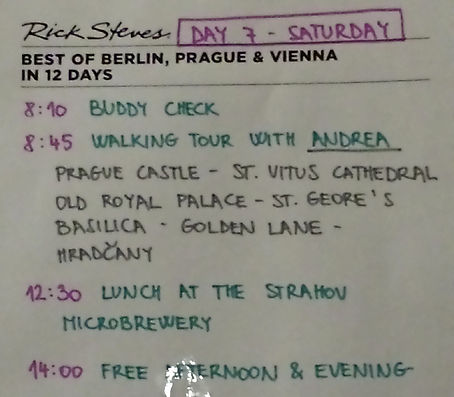
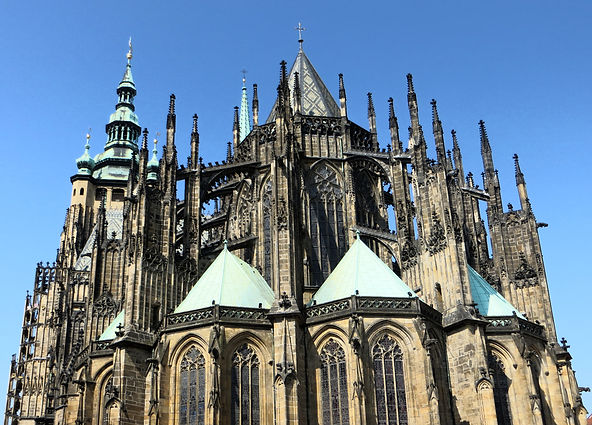
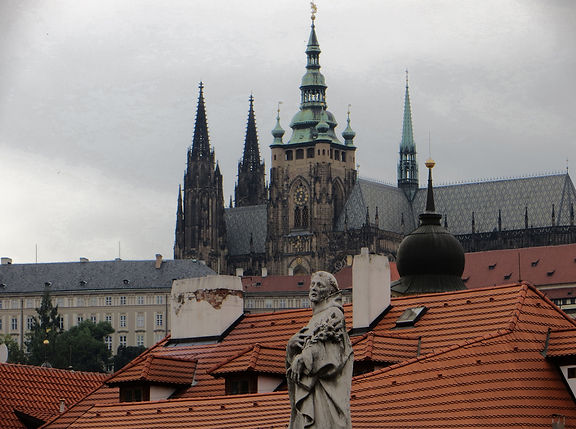
St. Vitus Cathedral: From a Distance and Up Close
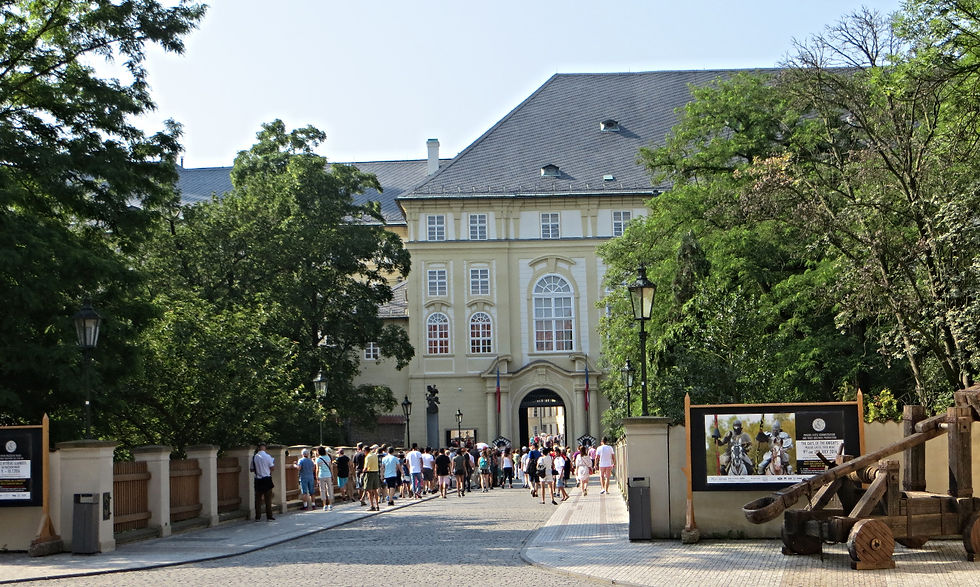

A castle guard striking fear in the hearts of opponents in his powder blue uniform.
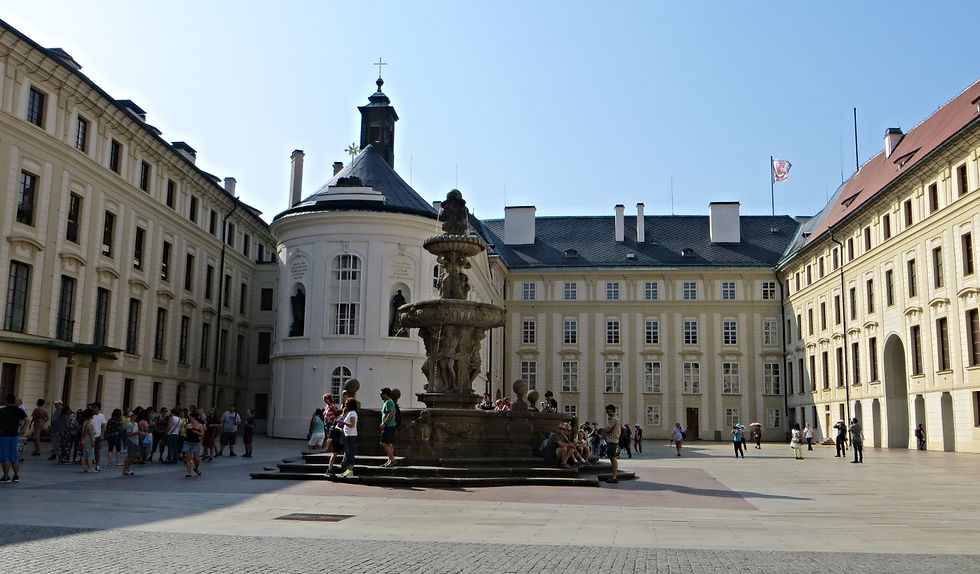


Close up of St. Vitus facade.
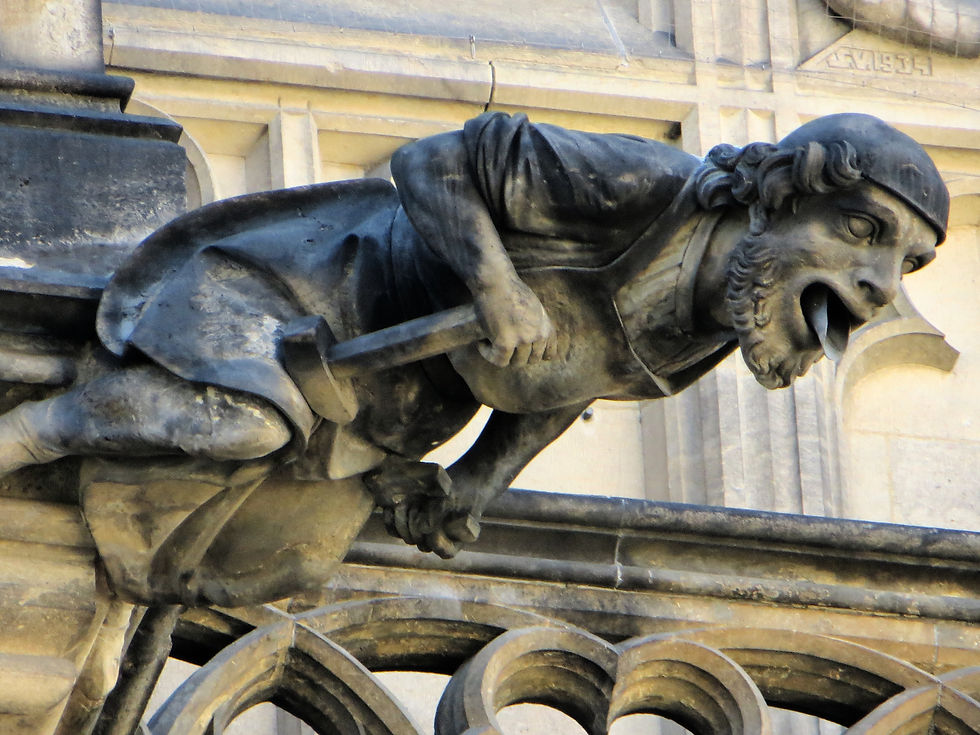
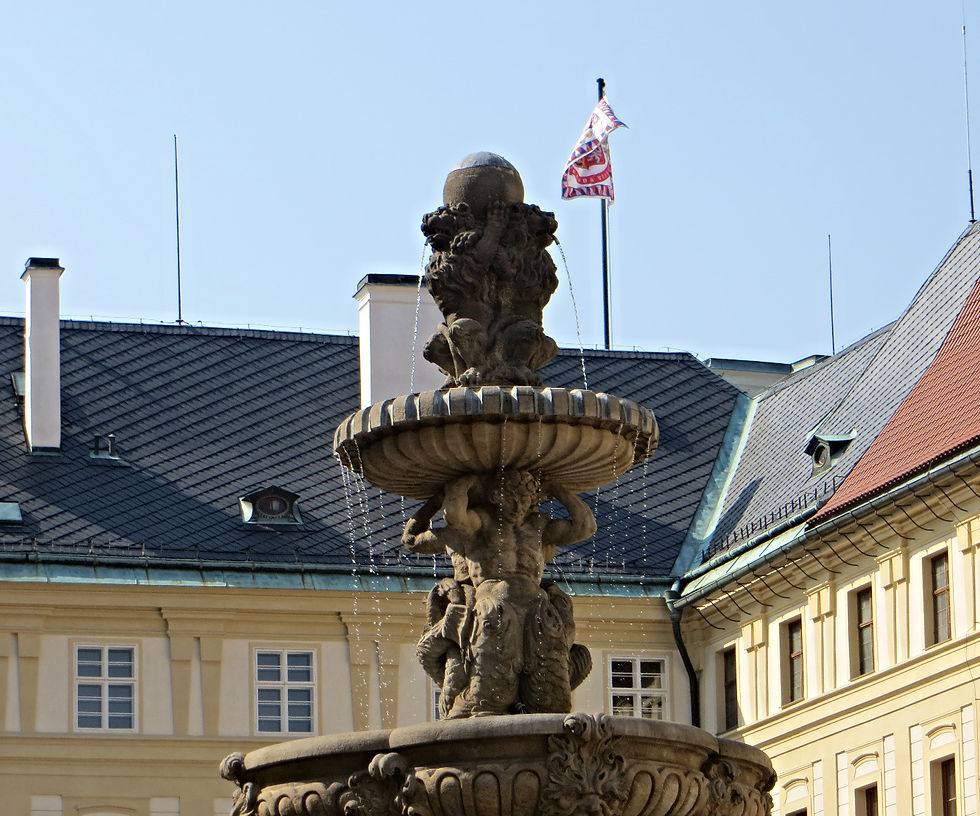
This flag indicates whether or not the Czech President is in his office at Prague Castle.


This is the vast Vladislav Hall where jousting contests were once held.
 |  |  |  |  |
|---|---|---|---|---|
 |  |  |  |  |
 |